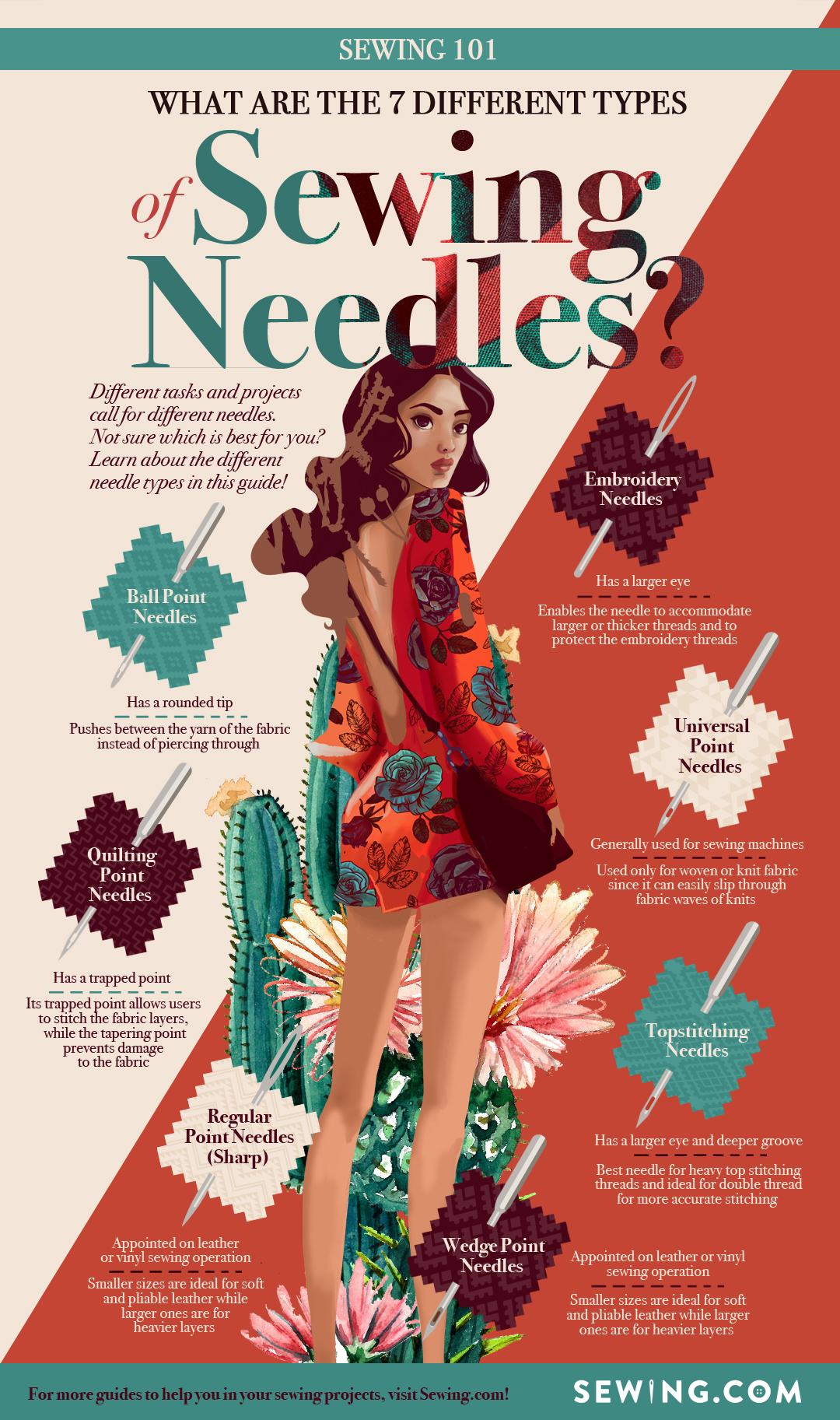Are all sewing needles suited to all kinds of fabric? The answer to this question is actually NO. Whether you are sewing by hand or machine, there is a sewing needle specifically designed for every stitching job, machine type, or fabric. Here is a helpful guide to choosing the best sewing needle you should use to get the job done while keeping your fabric from further damage.
Selecting the Right Needle for the Job
1. Ballpoint Needle
A ballpoint needle is designed for knitting and stretch fabrics. The pointed tip of a ballpoint needle is round instead of sharp. Unlike a sharp-pointed sewing needle, a ballpoint needle pushes between the yarns of the fabric. Ballpoint needles are large — they range from 9 to 16, the largest and the most rounded of them all.
2. Quilting Point Needle
A quilting needle comes with a trapped point that will allow you to stitch the fabric layers. The tapering point prevents from damaging the quality of the fabric when you sew. The quilting needle is usually small and hard when compared to typical sewing or hand needles. The sizes of these quilting needles range from 9, 10, 11, and 12.
3. Regular Point Needles (Sharp)
Use these self-threading needles if you are handling woven fabric like cotton, linen, or embroidery cloth. Regular point needles will allow you to sew an even stitch that will cause no damage or harm to your fabric. A common presence in a basic sewing kit, you can also use a regular needle for edge stitching in a woven fabric. The regular point needle has different sizes ranging from finest size (9) to the heaviest size (18).
4. Wedge Point Needles
This type of needle is sturdy and a bit thicker than most needles. This is why wedge point needles are often used for leather or vinyl sewing activities and in tandem with a sewing machine. The smaller size of this needle is used when working on soft and pliable leather, while the bigger size is used for heavier layers. Sizes of wedge point needles range from 11 to 18.
5. Embroidery Needles
Embroidery needles are self-threading needles designed for embroidery stitches or projects. The needles can also pass through embroidery cloth or fabric. Embroidery needles come with larger eyes to accommodate large or thicker threads. The size is also intended to protect the embroidery threads from unraveling.
6. Universal Point Needles
This needle type is generally used for a sewing machine and for knit fabric sewing projects. Use a universal point needle if you are sewing with woven and knit fabric as it can slip through fabric waves. The needle is also not that sharp enough to destroy delicate knit fabrics. The usual sizes of these needles are 14/90 and 11/75.
7. Topstitch Needles
Topstitching is a decorative stitching job where you make a row of continuous stitches on the visible part of the fabric. A topstitch needle is perfect for this stitching work. The needle comes with a large extra eye and deeper groove. This is also one of the essential sewing tools when doing heavy topstitching.
Still confused on what sewing needle or sewing tool to use on your next project? Check out and save this helpful infographic on the seven different types of sewing needles below:

When you start with a sewing project, it is important to choose the right sewing tools. Choosing the right sewing needle can help you produce a better outcome, keep your stitches from becoming dull, and prevent further thread damage on your fabrics. As such, the right sewing needles are the key to improving your embroidery and sewing projects. Using the wrong ones may also make your sewing project or job a little harder or difficult to accomplish.
Do you still have questions about sewing needle types and sewing tools? Share them in the comments section below!
Up Next: Sewing 101 | How to Properly Insert and Remove Sewing Machine Needle
Editor’s Note – This post was originally published on May 19, 2016 and has been updated for quality and relevancy.